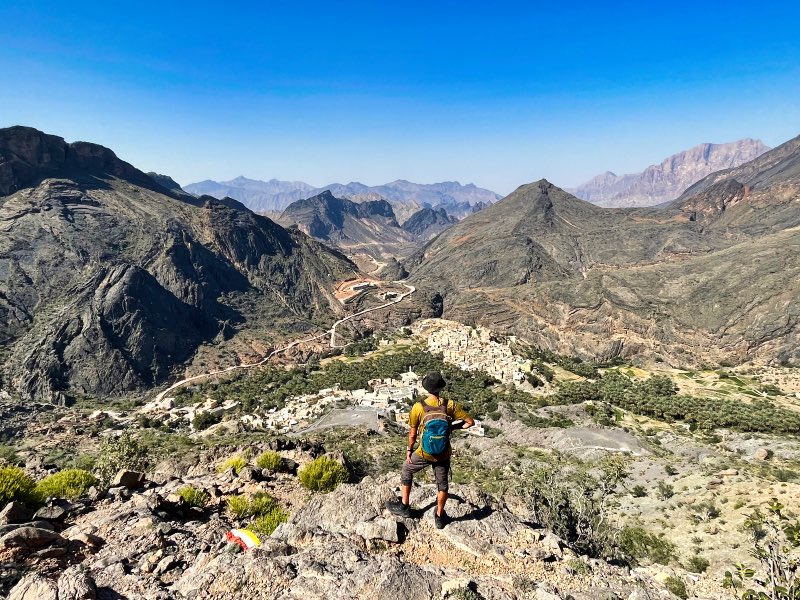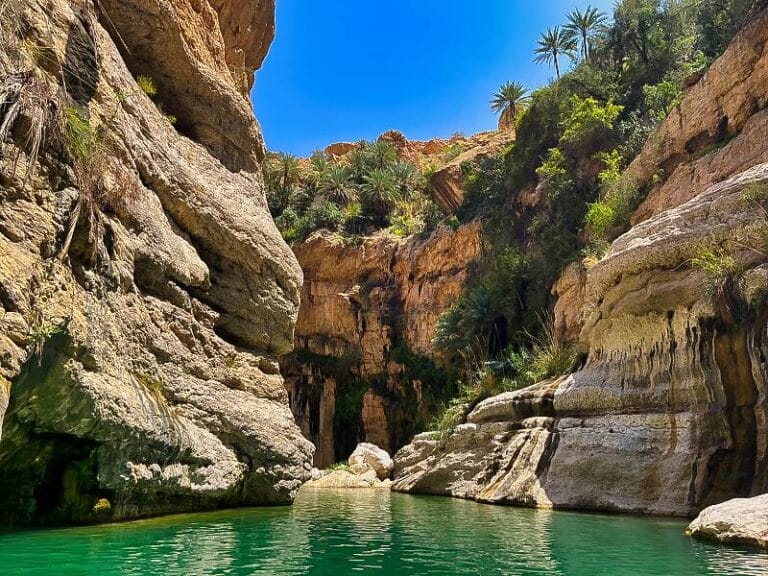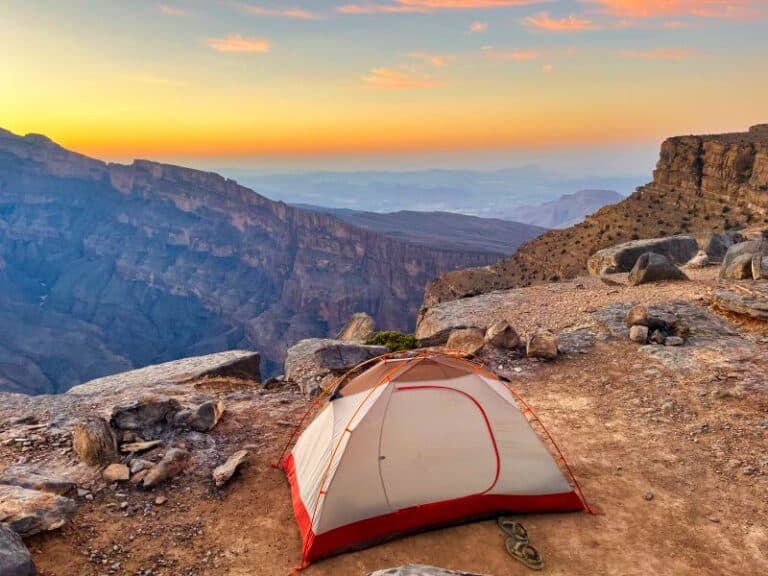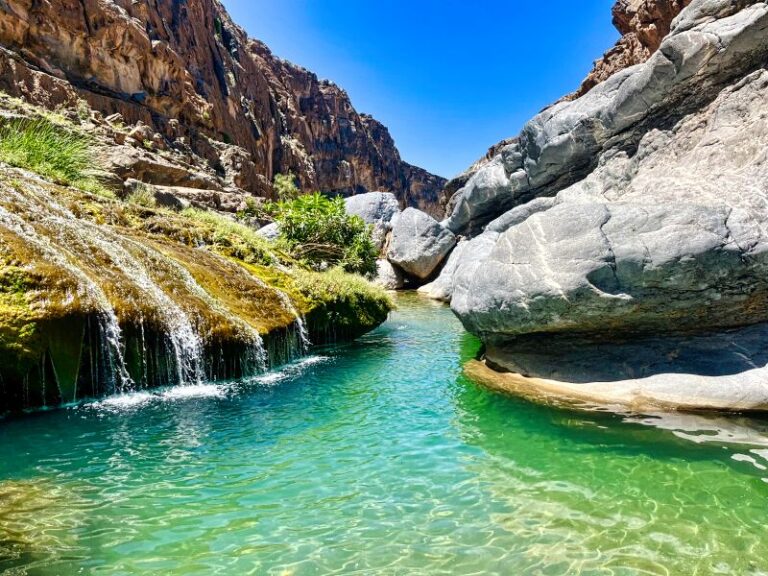The Ultimate Guide To Conquering Wadi Bani Awf (2024)
Epic mountain passes, picturesque villages, adventure canyons and scenic hiking trails to explore. Yes, Wadi Bani Awf is considered to be amongst the most spectacular drives in the Middle East.
Interested in conquering Wadi Bani Awf yourself? Our complete guide features all the information you need to take on this awesome adventure.
So read on to get our take on whether Wadi Bani Awf lives up to the hype. (Spoiler alert: it’s awesome!).
Oman Travel Resources
- Getting there: search for flights to Oman
- Where to stay: find a guesthouse or hotel
- Guidebook: pick up a copy of Bradt’s Oman
- How to get around: rent a car or 4WD
- Travel insurance: get travel insurance for your trip
- Money: get a Wise travel card to save big time in Oman
- Tours: explore the best tours in Oman
What is Wadi Bani Awf?
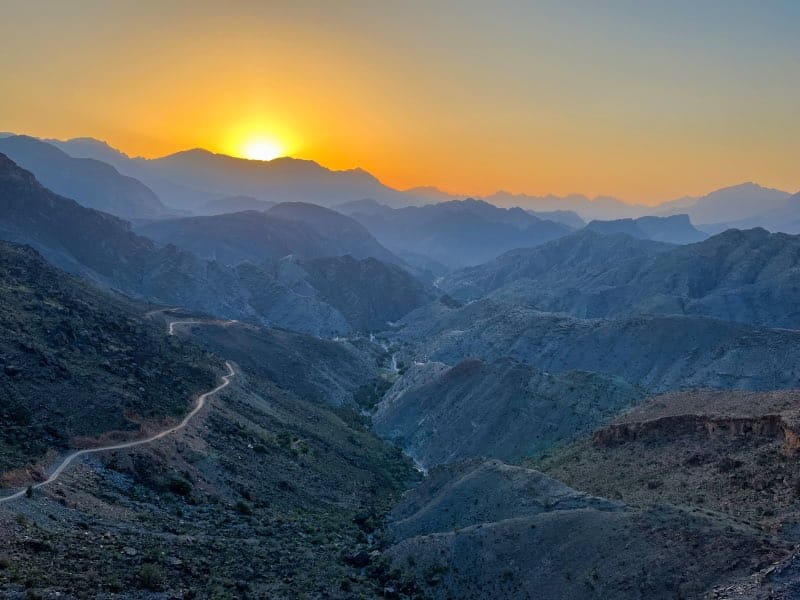
Wadi Bani Awf is a remote and scenic valley located in the Al Batinah Region of Oman.
It’s famous for its stunning natural scenery, rugged terrain, and adventurous routes, making it a popular destination for hiking enthusiasts, canyoning adventurers, and off-road driving aficionados.
The most common way people experience Wadi Bani Awf is by driving from Al Hamra through Wadi Bani Awf to Rustaq (or vice versa).
The road is regarded as one of the most challenging and picturesque roads in the Middle East and takes in the sights of the Hajar Mountains, Snake Canyon Oman, Little Snake Canyon and Bilad Sayt village.
Related: The Ultimate Guide to Camping in Oman (2024)
Wadi Bani Awf at a Glance
- Region: Al Batinah
- Starting Point: Al Hamra
- Ending Point: Rustaq (or visa versa)
- Length: Approximately 83 km
- Travel Time: Budget at least 4 hours for the drive but you could easily spend multiple days exploring the region
Where is Wadi Bani Awf?
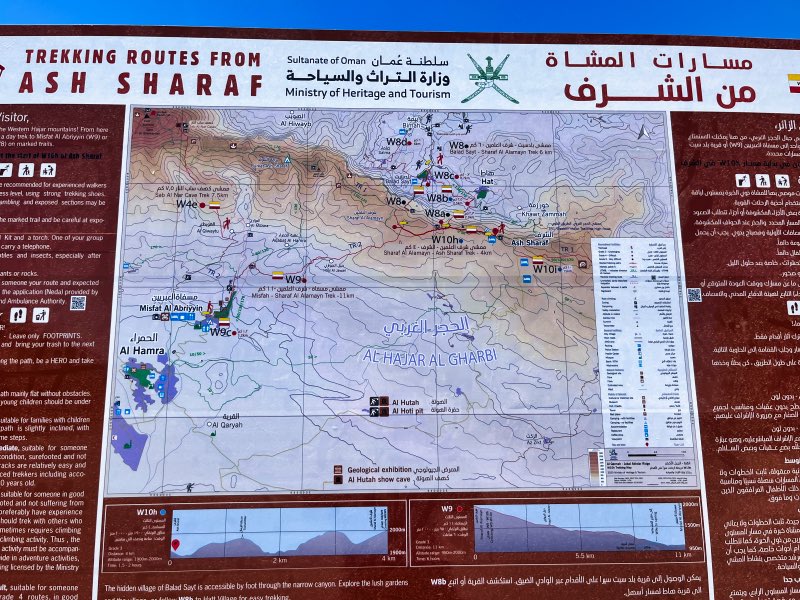
Wadi Bani Awf is located in the Al Batinah Region of Oman, approximately 150 km from the capital, Muscat.
The nearest town is Al Hamra and the nearest cities are Rustaq and Nizwa.
How to Visit Wadi Bani Awf
There are two main ways to reach Wadi Bani Awf: self-driving and guided tours.
Driving Wadi Bani Awf
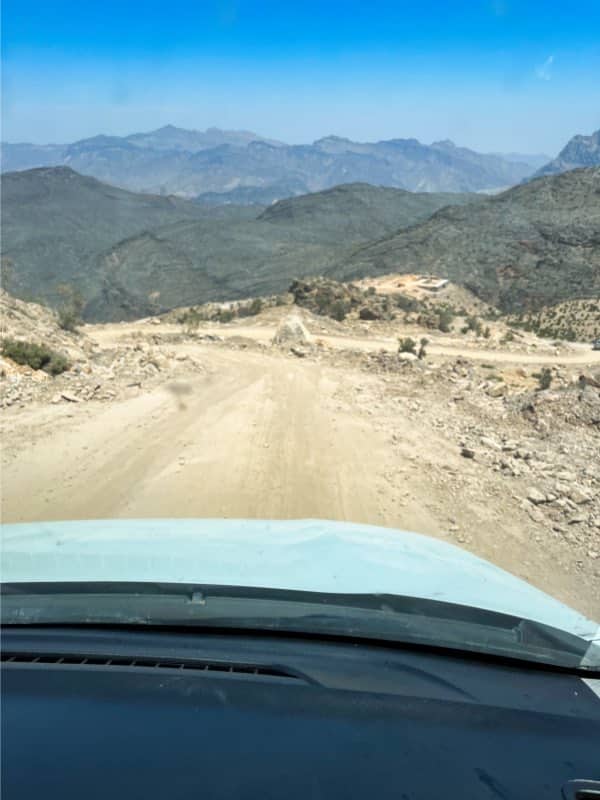
For experienced 4×4 drivers with access to a reliable vehicle, this is by far the best option.
Self-driving Wadi Bani Awf allows you the freedom and space to head up there on your own schedule and to travel on your own terms. You can stop all the sights you wish and take as many photos as you want (which will be a lot!).
Read next: Oman’s Hidden Gem – The Wadi Damm Pools
If you don’t have your own set of wheels, you can rent a car easily in Muscat for the journey.
We recommend renting a 4×4 with a good amount of power so that you’re fully confident driving Wadi Bani Awf – think a Mitsubishi Pajero or Toyota Fortuner.
Pro tip: use Discover Cars to find the best deals on rentals.
Wadi Bani Awf Tours

If you lack the experience to drive Wadi Bani Awf yourself or if you’d simply prefer to have an expert’s touch, several excellent Wadi Bani Awf tour companies will take you up there.
Our top picks include:
Which Direction to Drive Wadi Bani Awf
It’s possible to drive Wadi Bani Awf in either direction, but we recommend that you drive in the direction of Al Hamra to Rustaq. This is because the views are the most dramatic when you’re driving down into the Wadi from Al Hamra.
This is also your best option if you’re using a vehicle with a smaller engine, as the ascent from Rustaq to Al Hamra is incredibly steep, and requires a lot of power.
If you have a smaller engine, it’s best to descend this section, rather than ascend it.
Best Time to Drive Wadi Bani Awf

The best time to drive through Wadi Bani Awf is from October to April when the weather is cooler and more conducive to outdoor activities.
In the summer (May to September), Oman is scorching hot, making it difficult to enjoy being outside during the day.
How Difficult Is Driving Wadi Bani Awf?
How difficult you find driving Wadi Bani Awf will of course vary depending on your 4×4 driving experience, what kind of vehicle you’re driving, and the current weather and road conditions.
That said, it’s a challenging drive no matter how you slice it. It’s narrow, technical at times with loose rocks and uneven terrain and is surely the steepest road I have ever driven on. I definitely had a couple of moments of my heart popping out of my chest.
It can also be intimidating to make space for oncoming traffic but more often than not, you can spot approaching traffic with ample warning and find a space to let the vehicle pass (or vice versa).
The steep drops leading off the sides of the mountain can also be quite fierce so it’s best to skip the drive if you’re really afraid of heights.
While I had a few moments of going beyond my comfort zone, overall, I found the drive very doable and a hell of a lot of fun.
This is my personal experience and I’m a relatively seasoned 4×4 driver. If you’re a novice, afraid of heights or inexperienced at driving on steep terrain, then you may prefer to visit Wadi Bani Awf as part of a tour (for some great options, see above).
But if you’ve got a bit of experience under your belt and are ready for an adventure, then buckle up and enjoy the ride!
How Long Does It Take to Drive Wadi Bani Awf?
Wadi Bani Awf can be driven in less than 4 hours, however, we recommend planning for a full day to enjoy the journey without rushing.
You could easily spend multiple days exploring the region. There is some wonderful camping in the area, with amazing views of Jebel Shams and plenty of fun activities too – including more epic drives if you want more challenge!
What is the Wadi Bani Awf Road Like?
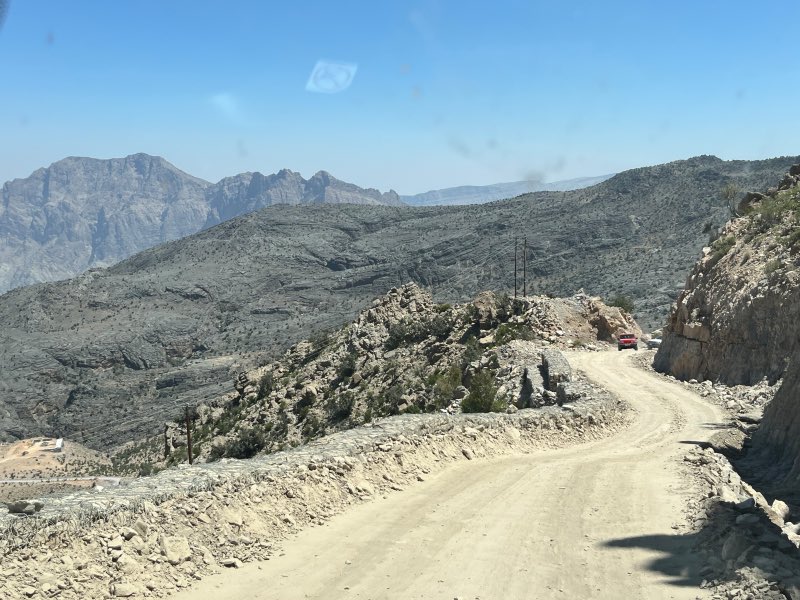
The road through Wadi Bani Awf is no joke. It’s steep as hell and a heck of a lot of fun. It features steep inclines and declines, narrow sections, and plenty of loose gravel and rocks.
The road is full of switchbacks and hairpin turns, especially as you climb or descend the mountains, requiring careful handling and slower speeds.
Despite the difficulties, the road offers stunning views of mountains, valleys, and canyons, with plenty of spots to stop and soak in the scenery.
We completed our drive in the direction of Al Hamra to Rustaq. Here, the journey can be divided into the following 4 sections:
- Al Hamra to Sharafat Al Alamayn Viewpoint – 28km, Easy/Moderate
- Sharafat Al Alamayn Viewpoint to Bilad Sayt village – 13km, Challenging
- Bilad Sayt village to Little Snake Canyon – 12km, Challenging
- Little Snake Canyon to Rustaq – 33km, Easy/Moderate
Al Hamra to Sharafat Al Alamayn Viewpoint
From Al Hamra, the first 20 km involves climbing on a tarmac road up to the Sharafat Al Alamayn viewpoint at 2000m.
This section takes around 1 hour and whilst steep, it’s an easy drive due to the smooth sealed road.
Sharafat Al Alamayn Viewpoint to Bilad Sayt Village
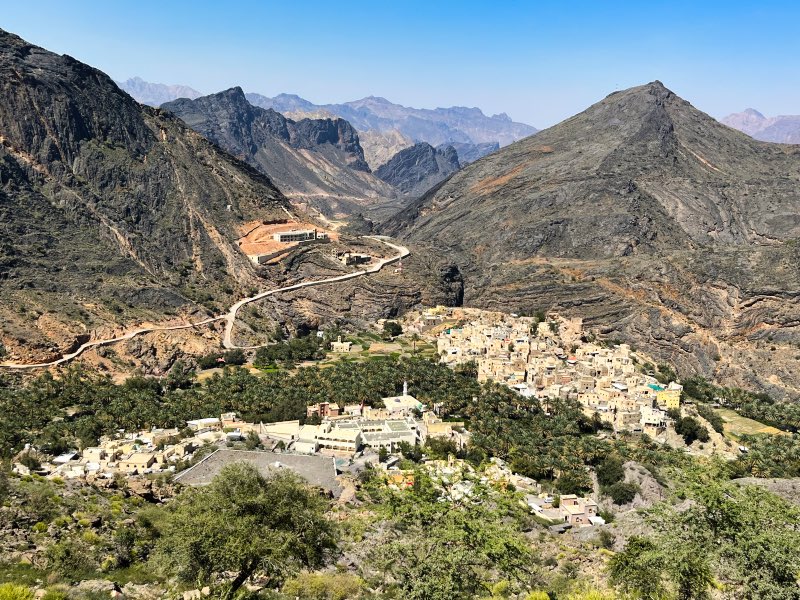
From the viewpoint at Sharafat Al Alamayn, the fun really begins.
As you leave the viewpoint, the tarmac gives way to a dirt track and the crazy descent dials up to an 11!
From here, you’re treated to amazing views of the neighbouring mountain peaks and valleys below. You can even look way below and beyond to where you’ll eventually end up.
This section is around 13km from the viewpoint to Bilad Sayt and at times it feels like it goes on forever! It’s crazy steep and narrow at times but also so scenic.
Before reaching Bilad Sayt village, it’s possible to stop at both Hatt village and the first Snake Canyon entrance for a swim and short walk.
Unless you’re an experienced canyoner, you’ll only be able to walk about 10 minutes into this section of Snake Canyon before needing to turn around. That said, it’s still worth checking out though.
Between Snake Canyon and Bilad Sayt, you will pass a very scenic football pitch which was created by Audi for an ad campaign. This offers yet another good photo opportunity.
Bilad Sayt village to Little Snake Canyon
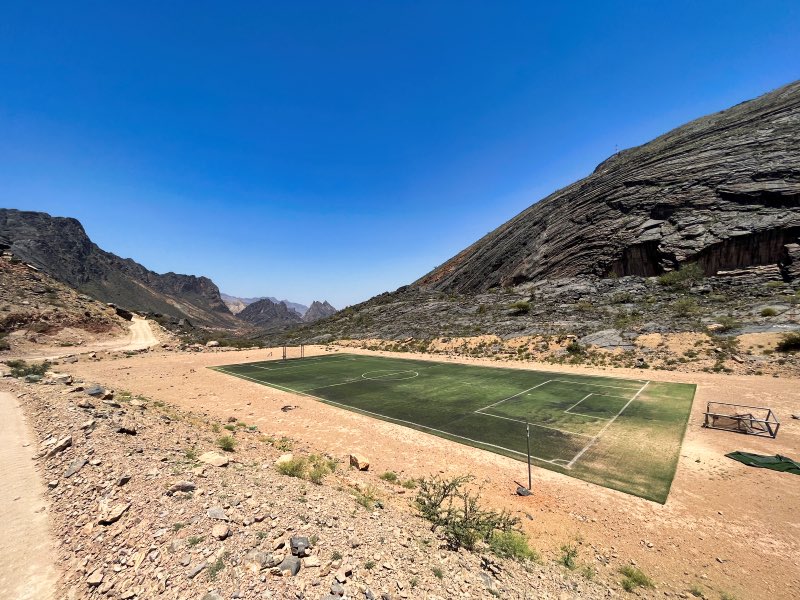
Bilad Sayt village to Little Snake Canyon involves another challenging 12km section that features steep ascents and descents and no shortage of narrow sections.
You will pass another entrance to Snake Canyon, known as Left Fork Canyon, as well as the main exit to Snake Canyon (which is the most accessible part of the canyon to explore).
Before reaching Al Zamah (the exit to Snake Canyon), there is one final steep descent before finally flattening out…now you can fully exhale. The hard sections are now over!
From here, it takes another 15 minutes or so on a relatively easy section along the wadi floor to reach Little Snake Canyon.
Little Snake Canyon to Rustaq
The last 33 km from Little Snake Canyon to Rustaq is pretty straightforward and does not involve any technical driving. We’ve seen sedan cars on this stretch!
16km past Little Snake Canyon, you will reach a fork in the road. Turn left at the fork onto Route 13 and stay here for 11km.
From here, turn right into Route 11 and after 4.7km, you will reach Rustaq.
What Kind of Vehicle Do I Deed to Drive Wadi Bani Awf?
To tackle this route, a 4×4 vehicle is a must because regular cars can’t handle the rough terrain.
You’ll need to be comfortable with off-road driving and ready to manoeuvre through challenging paths.
The best vehicle for driving Wadi Bani Awf is a powerful 4×4 with full low-range gears such as Toyota Prado, Nissan Patrol or Land Rover Discovery. While some clearance is required, a high-clearance 4×4 isn’t essential.
The most important component is to ensure that you have a 4×4 with a powerful braking system. Downhill Assist is a good start but full low-range gears would be better. These kinds of vehicles are well-equipped for very steep roads.
You will also want a 4×4 with a large enough engine to climb the steep sections – I’d say a 2.4L engine and above.
Tips for Driving Wadi Bani Awf

Preparation is key for this journey. Ensure your vehicle is in top shape with good tires and a full fuel tank. Pack plenty of water, snacks, and a first aid kit since mobile reception is spotty.
Wadi Bani Awf Accommodation
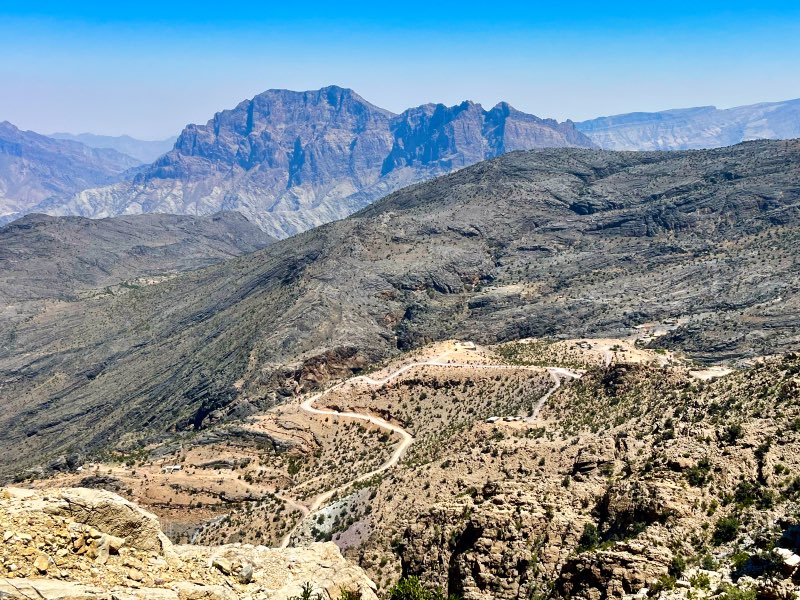
If you want to spend a night or two along Wadi Bani Awf (which we recommend you do!), there are a couple of lovely options in Bilad Sayt.
Other accommodation options throughout Oman can be booked here.
What To Do Around Wadi Bani Awf
Wadi Bani Awf is about more than just the drive. Along the way, there are also lots of interesting points worth stopping at.
Our favourites include Snake Canyon Oman, Little Snake Canyon, Bilad Sayt and Hatt village.
Snake Canyon Oman
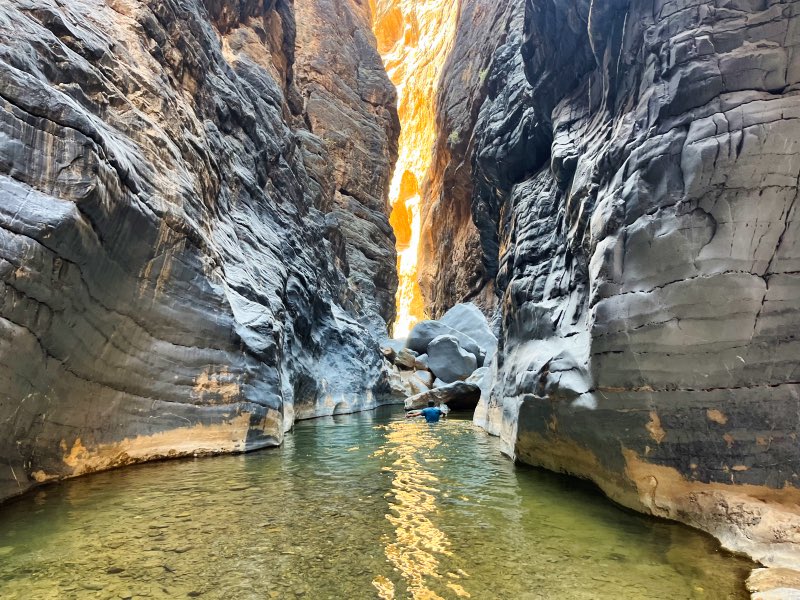
Snake Canyon is an adventurous canyon that’s not for the faint of heart. Tackling it requires either previous canyoning experience and gear or opting to go with an established Snake Canyon tour operator. The canyon features epic scenery, cliff jumping, waterfall drops and cave swimming.
Pro tip: if you don’t have gear or don’t want to go on a tour but still feel like checking Snake Canyon out, you enter the canyon through the canyon’s exit at Al Zamah village. From here, you can make it reasonably far into Snake Canyon. Just bear in mind that the further you go, the more sketchy it gets so please be careful.
Little Snake Canyon
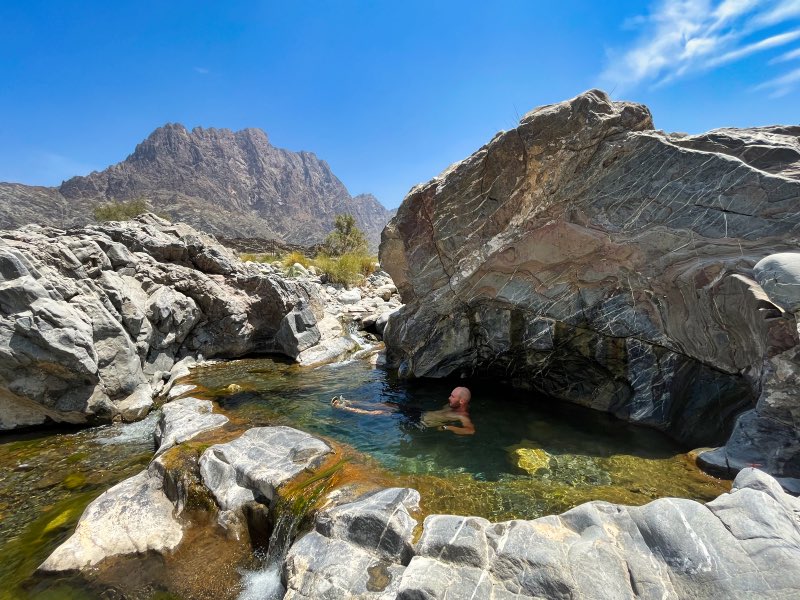
Little Snake Canyon is basically Snake Canyon’s little brother. It’s smaller and less adventurous than Snake Canyon but still offers some really fun swimming opportunities and a bit of a walk too.
It’s approximately a 1-hour walk to the far side of the canyon and back again.
While it is possible to walk past the last pool at the end of the canyon, we recommended turning around there as there isn’t much to see beyond this point.
Bilad Sayt village
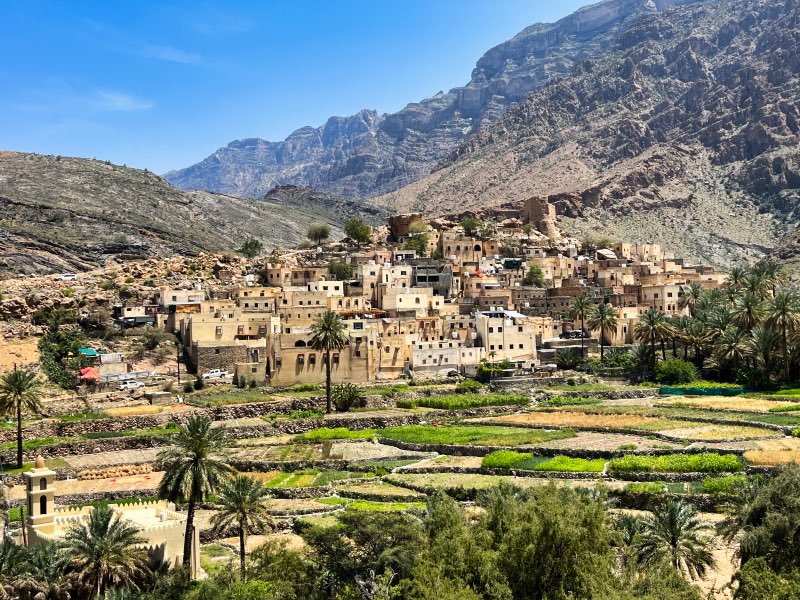
Bilad Sayt, sometimes spelt Balad Sayt, is a picturesque village known for its terraced farms and date palms. Stopping here is an absolute must as it’s very beautiful and offers some excellent hiking trails and viewpoints to explore.
In fact, Bilad Sayt is connected to a whole network of trails including a full day’s hike to Misfat Al Abriyeen village.
Hatt Village
Hatt is the first village you pass when driving in the direction of Al Hamra to Rustaq. It’s very small but quaint.
You can choose to take a quick break and a swim here or opt to continue the additional 5 minutes to Snake Canyon and break there. Or you can stop at both – it’s your call!
How to Get to Wadi Bani Awf
The main points to access Wadi Bani Awf are from Muscat and Nizwa. We’ve provided directions from both.
From Muscat
From Muscat, your starting point to Wadi Bani Awf will be Rustaq.
From Nizwa
From Nizwa, your starting point will be Al Hamra.
Disclaimer: This post contains affiliate links. This means that if you buy or book anything through them, we’ll earn a small commission at no extra cost to you. This helps us run this website and create comprehensive guides to help you get off the beaten track. We only recommend products and/or services that we use ourselves and trust.

